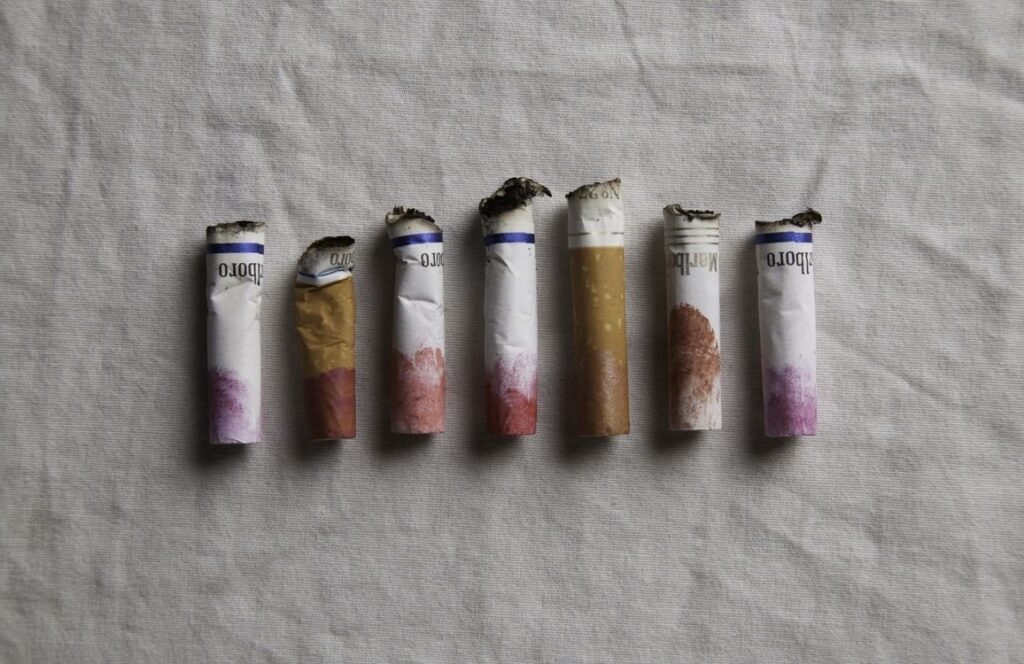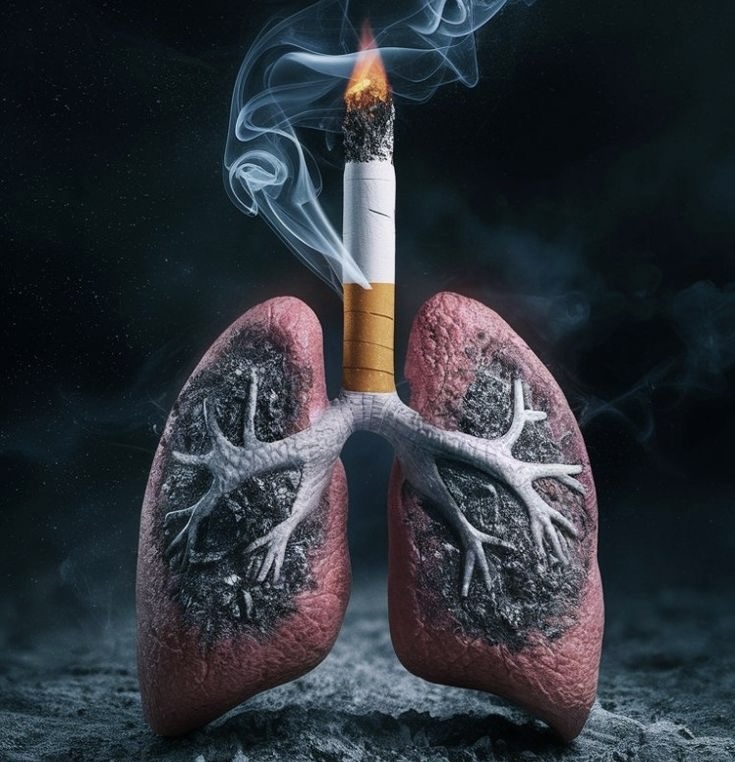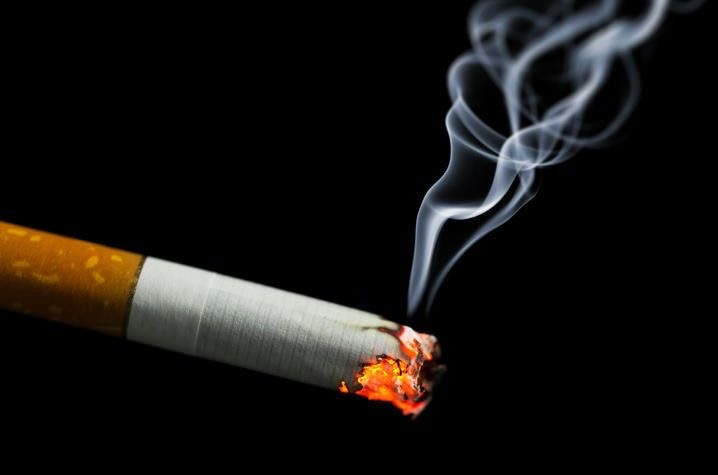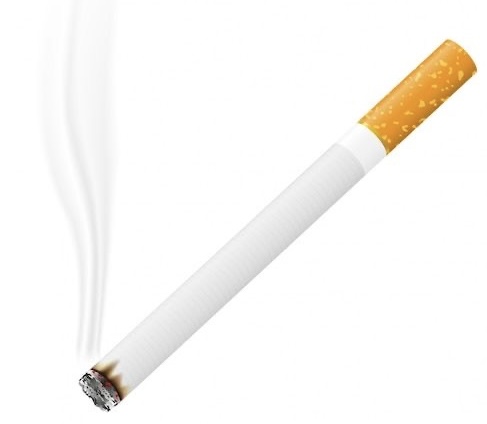Puff…puff..pass. Get the profit. Rinse and repeat the cycle.
They weren’t just selling cigarettes. They were stealing lifetimes… One pack at a time.
Imagine if a company knew their product could kill you…but instead of fixing it, they pulled out a calculator, crunched the numbers, and decided, “Yes, we will keep selling it. The profits are worth it.”
This is exactly what happened with Big Tobacco.
For decades, Big Tobacco did not just lie about the dangers of smoking; they also built an entire business empire on those lies. Behind the glossy ads, the glamorous models, and the cool-looking billboards was a cold and wicked calculation. They made it their mission to figure out exactly how much money each smoker was worth, decide how many could die before it became a “problem,” and then keep the cycle going.
This is a story of how cigarette companies turned human lives into numbers on a spreadsheet. It also recounts how they fought tooth and nail to conceal the truth. Now, the scary part is that the same ruthless book they play by is presently being used by oil giants, tech companies, and even parts of the pharmaceutical industry today.
So, keep reading to discover how they accomplished it, how they were caught, and why the same tactics are still being used on us today.
The Day the Suits Got Scared
It was in 1953 that scientists started connecting smoking with lung cancer, and after the discovery, the news started spreading fast. The tobacco industry saw that if people stopped buying cigarettes, they could lose billions of dollars.
Picture a bunch of CEOs in fancy, well-tailored, and expensive suits, puffing away, deciding what to do.
So, what did they do?
The heads of America’s biggest cigarette companies met at the Fancy Plaza hotel in New York. Just picture a bunch of CEOs in fancy, well-tailored, and expensive suits, puffing away, deciding what to do.

Instead of admitting the truth about the product they were selling, they came up with a plan:
- Step 1: Pretend the science is not clear.
- Step 2: Create their own “research committee” to appear legitimate and secretly manipulate the results.
- Step 3: Inform the public that the industry claims to care about their health, but does nothing to change the product.
A month later, in January 1954, they published a giant ad in more than 400 newspapers. It was called “A Frank Statement,” which is quite funny, because it was anything but frank. It basically said, “Don’t worry, the science is not proven yet. We will investigate!”
Fun fact: This ad reached 43 million people, essentially the entire U.S. adult population at the time.
The Birth of the Big Lie
After the “Frank Statement,” the industry doubled down on the lie. They established the Tobacco Industry Research Committee and hired scientists whom they were confident would help them spin the story.
In a move straight out of a spy novel, tobacco executives from several countries formed a secret alliance to protect their profits and slow down health regulations.
They didn’t stop there. If an independent scientist found something bad about smoking, they would attack them, question their research, and even pressure universities to cut their funding.
By the mid-1970s, they had taken the whole thing global. In a move straight out of a spy novel, tobacco executives from several countries formed a secret alliance to protect their profits and slow down health regulations. Behind closed doors, they gave it a code name: Operation Berkshire.
Turning Death Into Math
Here is where it gets very dark. Tobacco executives knew people were dying. They had all the data, but they did not think of it like, “Oh! We’re killing people.” Instead, they thought, “What is the cost per death, and is it worth it?“
Yes! They didn’t care. They literally treated people like numbers.
A package for delivering nicotine, not a lifestyle choice, not a luxury reproduction.
Internal memos show that they calculated the profit made per smoker, the number of smokers who would die early, and the potential cost of lawsuits. If the profits outweigh the costs, then they are good; whatever happens outside of that doesn’t concern them too much.

One executive said, “We are, then, in the business of selling nicotine, an addictive drug.” Another memo described cigarettes as “a package for delivering nicotine”— not a lifestyle choice, not a luxury reproduction. Just a nicotine delivery system.
Recruiting the Next Generation of Smokers
Let’s narrate another cold move. The tobacco industry knew cigarettes were killing people; this means there would be a declining number of returning customers. To maintain profits, tobacco companies had to replace lost customers with new ones. And guess who they targeted?
Hook someone on cigarettes before they turn 18, and you might have them for life.
Teenagers.
Why? Because they knew most smokers began smoking at a young age. Hook someone on cigarettes before they turn 18, and you might have them for life. They used cartoon mascots like Joe Camel to make smoking look fun and rebellious. Their plan works. Teen recognition of Joe Camel was as high as Mickey Mouse. No joke.
They also targeted specific groups. They targeted women by marketing cigarettes as “slim” and “glamorous.” African American communities were targeted with heavy advertising for menthol brands, and they targeted low-income neighborhoods with discounts and coupons to make them more affordable.
One internal memo from cigarette giant R. J. Reynolds was so shockingly blunt that it reads like a villain’s monologue in a movie. It spelled out exactly who the company wanted to hook on smoking: the poor, the young, the black, and the stupid. This is not an exaggeration; it is an actual quote from their own files.
Lies in the Spotlight
In 1994, the U.S. Congress called the CEOs of the biggest tobacco companies to testify. It was a huge deal, as it was televised and also on the front pages of newspapers.

One by one, each CEO swore under oath, saying they do not believe nicotine is addictive. They all knew they were lying, as their own labs had already proven that nicotine was as addictive as heroin. However, they also knew that admitting to the truth would have opened the floodgates for lawsuits.
To make matters worse, they started pushing “light” or “low tar” cigarettes as a safer choice, knowing full well that smokers would just inhale more deeply and take in the same amount of toxins.
The Whistleblowers Who Blew the Door Open
To the executives, it was simple. The public believed them, the science/truth was buried, and the profits kept rolling in. In their minds, their ruse was airtight, but they were wrong. Everything started to unravel in the 1990s.
Tobacco still kills more than 7 million people every single year.
Two people risked everything to leak the truth. Jeffrey Wigand, a research executive at Brown & Williamson, revealed that the company was manipulating nicotine levels and hiding health risks.
Merrell Williams Jr., a paralegal, smuggled out 4,000 pages of internal documents. The papers revealed decades of cover-ups, secret marketing to teenagers, and detailed spreadsheets that showed how profits were balanced against human lives.
The jig was up!
The Big Payback: Lawsuits and the RICO Verdict
In 1998, the Master Settlement Agreement hit the tobacco industry like a sledgehammer. They had to pay at least $206 billion to U.S states for more than 25 years. They had to stop using cartoons in ads and also had to hand over millions of internal documents to the public.
Then, in 2006, a federal judge ruled that they had engaged in organized crime…yes, actual racketeering under the RICO Act. The judge’s ruling said they had acted “with zeal, with deception… and without regard for human tragedy.”
The Death Toll
Although today, fewer people smoke, tobacco still kills more than 7 million people every single year. This is like wiping out the entire population of New York City every year. Out of these 7 million people, about 1.6 million die from secondhand smoke, which means they did not even smoke themselves, but breathed in someone else’s smoke.
Big Tobacco’s “delay and deny” tactics did not die with the lawsuits; other industries copied them.
About 80% of the people who smoke now are those who live in low/middle-income countries. These are often places where cigarette ads are everywhere, where prices are kept low, and where there is very little help for people who want to quit. Poor communities get hit the hardest.
The Tobacco Playbook Lives On
The scary part is that Big Tobacco’s “delay and deny” tactics did not die with the lawsuits; other industries have adopted them.
Big Oil and Climate Denial
Oil companies like Exxon knew decades ago that burning fossil fuels was heating the planet, but instead of warning the public, they spent money to create doubt. They funded groups and experts who claimed climate change was not real, just to delay action. Many of the PR companies and the tactics they employed were the same ones used by the tobacco industry.

Pharmaceutical Companies and Opioids
Some drug companies also knew their painkillers were highly addictive. They had the data, but they still pushed these drugs, especially to people who were vulnerable. They downplayed the risks, just as the tobacco industry did, treating the human cost like a line on a profit-and-loss chart.
Big Tech and Influence Manipulation
Some tech giants quietly fund studies and online influencers to portray themselves in a more favorable light. They do this to soften criticism about privacy issues, AI risks, or how their products can harm mental health. This is straight out of the tobacco playbook. It is the “keep the public confused and control the message” strategy.
It is all the same game. The aim is to protect profits, control the message, and keep the truth as fuzzy as possible for as long as possible.
Breaking the Cycle
Transparency matters. Whistleblowers like Jeffrey Wigand and Merrell Williams Jr. proved that when insiders speak up, it can bring down a wall of lies.
Additionally, regulation needs to be proactive, rather than reactive. Back then, courts only stepped in after millions of people had already died. Laws need to be in place before disaster strikes, not after. This includes plain packaging for cigarettes, banning misleading ads, and strong, independent oversight.
The tobacco companies did not just sell cigarettes, they sold the dream, wrapped in smoke, while hiding the nightmare.”
Public health shocks work too. Things such as graphic warning labels on packs, hard-hitting anti-smoking ads, and school education programs have been shown to make fewer people start smoking. In countries that force plain packaging, smoking rates have gone down.
Tobacco companies targeted women with low incomes, young people, and marginalized communities. The public needs to stop this because equity matters. There should be a crackdown on price tricks, store displays should be limited, and industry influence in vulnerable areas should be cut.
We can’t let human lives be reduced to a line on a spreadsheet. Once you start assigning “cost” to a life, it is only a matter of time before you pick profits over people.
When Lives Are Reduced to Numbers
Profits up… Deaths counted… Keep the cycle running.
This was the unspoken rule behind Big Tobacco’s empire. Human lives were not precious to them; they were just columns on a spreadsheet and variables to be managed. And once a business starts thinking like that, the damage does not end with cigarettes.
The tobacco companies did not just sell cigarettes; they sold the dream, wrapped in smoke, while hiding the nightmare. The story isn’t just about the past; it is a warning about the future. The next time you hear a company say, “The science isn’t settled,” remember the tobacco industry’s actions, remember Joe Camel, remember the spreadsheets.
Behind the PR smiles and catchy ads, someone might be running the numbers and deciding that your life isn’t worth as much as a quarterly profit.
If this opened your eyes, share it and let’s get the conversations going in the comments.

